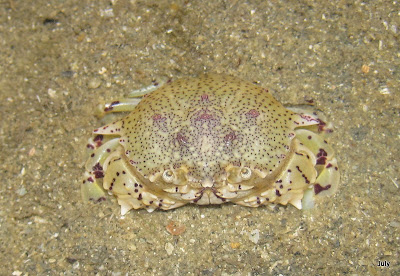121st Discovery Posting:
It has been about six long months since my last posting on this blog. The reason behind this hiatus is not because I have stopped going for nature related trips but of my slackness and laziness in updating the blog.
Anyway, have you ever looked into your cup or bottle of plain water to see the colour of the water you have been drinking? Have you ever wondered what colour is the water you are drinking or seeing around you?
Like me, most of us would probably conclude that water is colourless just by looking into the cup or bottle of water.
However, a sudden curiosity about the colour of water hit me and off I was doing some research on the internet. And the results I got back raised my eyebrows a bit.
Yes. As the title of this blog posting suggests, water is blue! I will try to provide a simple explanation of this using the readings I've found.
To put it simple, water is blue because of its molecular structure and its behaviour from the molecular structure.
First, let us look into water, or more specifically pure water's molecular structure (H2O). This structure involves hydrogen bonding and this structure of it (I'm not really sure about others as I do not an expert on chemistry) causes vibrational transitions.
In my opinion, just imagine the hydrogen and oxygen atoms are small metal balls attached to one another by strong springs and the idea of vibration would come easier.
The behaviour it exhibits because of the vibrational transitions would be easier to understand.
The resulting behaviour is that water absorbs red light well but not blue light. That's why large volumes of water like a swimming pool, the seas/ocean would appear blue in colour. Now you may be wondering, "Hey, my cup of water looks colourless. So isn't water colourless?"
You might not be wrong as studies point out that only pure water is blue in colour. Don't be alarmed because not drinking pure water doesn't mean it is not fit for drinking. This is because the water agencies might have added other stuff into your drinking water. That, however, is another story.
A simple experiment, as from what I read, to test that pure water is blue is to by looking at a white light source through a long pipe, filled with purified water, that is closed at both ends with a transparent window.
That's about it before I bored you to death. If you are interested, I have included the website I've read from.
Reference links:
Main site I read from: http://www.webexhibits.org/causesofcolor/5B.html (in-depth reading)
1) http://www.webexhibits.org/causesofcolor/5.html
2) http://www.discovery.com/area/skinnyon/skinnyon971003/skinnyon.html#blue (simple and interesting reading)
3) http://www.dartmouth.edu/~etrnsfer/water.htm (in-depth reading)
In my search of information, I also chanced upon this video from youtube.
Of course, there are authoritative websites which state water is colourless.
The reason they believe water is colourless is mainly based on the concept that water is a strong absorber of red light and a weak absorber of blue light. Well, the theory is right though.
Here are some of the websites I have found:
1) http://science.nasa.gov/earth-science/oceanography/living-ocean/ocean-color/
2) http://www.hko.gov.hk/education/edu06nature/ele_water_e.htm



 Despite the rainy weather, spirits were still quite high. I reckon this had to do with the amount of high energy the participants had. Hahaha... Anyway, the day got better as it went on. The first of it was a rainbow that appeared as we approached the forest trail.
Despite the rainy weather, spirits were still quite high. I reckon this had to do with the amount of high energy the participants had. Hahaha... Anyway, the day got better as it went on. The first of it was a rainbow that appeared as we approached the forest trail.












































